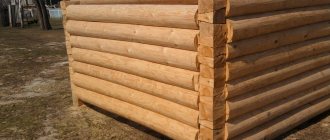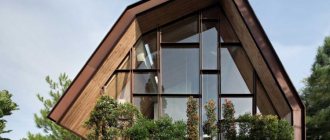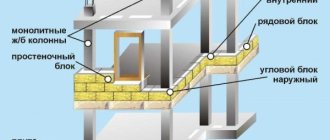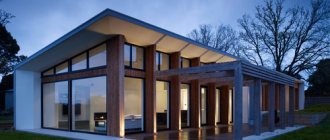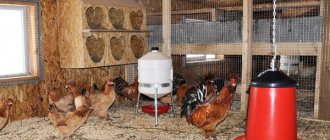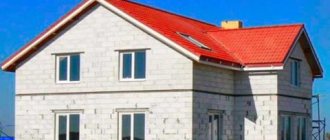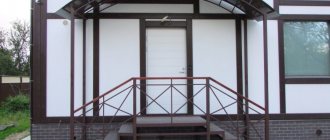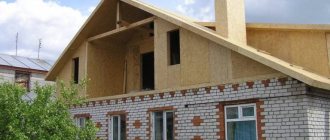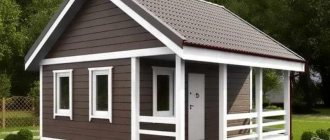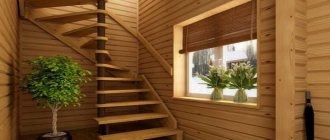Advantages of the attic
It is beautiful. A house with an attic looks much more attractive than a typical square box.
It's unusual. Modern design for the attic allows you to realize the most impossible ideas and turn a former dump of unnecessary things into the most comfortable place.
This is an opportunity to effectively reduce heat loss at home, which is achieved through additional insulation of the attic. If there are windows, the attic is better illuminated, which makes it possible to save on electricity.
In an existing house, these are additional meters, the reconstruction of which will cost less than building another floor, making changes to the building plan, or hiring workers. And there will be ten times less dirt.
The attic is not taken into account when determining the number of storeys of a building.
Design features
The moisture content of warm indoor air is higher than that of cold outdoor air, so the diffusion of water vapor (both through the attic covering and through the outer walls of the building) is directed from the room to the outside. The outer (upper) part of the roofing is a waterproofing layer that does not allow water vapor to pass through easily and promotes the formation of condensation moisture on the inner (lower) side of the roof. The consequences will not be long in coming: despite the well-done waterproofing of the roof, wet spots and mold will appear on the inner surface of the roof covering, the thermal insulation qualities of the insulation will deteriorate, droplets of water will begin to fall from the ceiling (not due to a roof leak, but as a result of condensation of water vapor) .
Considering the negative impact of moisture on the thermal insulation characteristics of materials, the insulation must be protected from moisture by water vapor contained in the air of the room with a layer of vapor barrier material, placing it on the inner (bottom) side of the insulation. To remove moisture that for some reason has entered the heat-insulating material, a ventilated air layer should be provided between the insulation and the outer (waterproofing) layer of the roofing.
Very often, non-residential attic spaces are converted into residential attics, preserving the existing rafter system. At the same time, in an effort to minimize the additional load on the building’s load-bearing structures, lightweight insulation of low density is usually used. Under the influence of wind, low-density insulation is “blown through,” accompanied by heat loss; therefore, in order to maintain the heat-protective characteristics of the structure, a layer of windproof, vapor-permeable material must be laid on the surface of the thermal insulation adjacent to the ventilated layer.
When insulating an attic, you need to remember that heat loss occurs not only through the covering, but also through the end wall. Therefore, the gable of the house also needs to be well insulated in accordance with modern requirements.
Disadvantages of the attic
It will not be possible to place tall furniture on the attic floor; it may be uncomfortable for tall people to be here; due to the sloping surface of the ceilings, the room does not have a large usable area.
To create a cozy room, you will have to spend additional money on thermal and waterproofing.
In winter, you will have to spend some effort cleaning the windows from snow.
However, all these disadvantages will be covered by the charming view from the windows, which you can admire without getting out of bed, and the uniqueness of the room with completely unusual dimensions.
Note!
- Ceiling with beams: TOP-170 photos and videos of ideas for decorating a ceiling with beams. Selection of designs for low and high ceilings. Types of materials for beams
Living room in a private house: TOP-180 photos of design options for a living room in a private house. Tips for zoning a room. Stylistics and colors
- Hallway in a private house: nuances of hallway design in a private house. Choice of style and color solutions. Finishing materials. Photo and video reviews
Organization of the rafter system
Independent construction of a private house, in most cases, involves the construction of a sloping roof, which allows optimizing the internal space underneath.
With the same width of the base (of the house), the attic space under a sloping roof is larger than under a regular gable roof. The rafter system is becoming more complex, but a gable roof with an attic under a sloping roof is still more popular
A broken attic roof can ultimately have a rather interesting appearance, since the overhangs can be lowered as low as possible. At the same time, long roof overhangs perform several important functions. One of them is to divert water as far as possible from the foundation, covering part of the wall from precipitation. Despite this, one should take into account the fact that long overhangs increase the windage of the entire structure. In this case, you should opt for more powerful roof structural elements. In this regard, at the design stage the main emphasis is on the weather conditions of a particular region.
Roof angle
The roof angle is chosen for a reason, based on personal considerations. Firstly, this angle depends on the roofing material, and secondly, on the weather conditions of the area. The figure below shows the classic version, when the lower part of the roof relative to the horizontal plane is inclined at an angle of 60 degrees, and the upper part of the roof has an inclination of about 30 degrees. Based on such indicators, it is not at all difficult to calculate all the elements of the roof. In this case, you need to pay attention to the fact that the ceiling height in this room cannot be less than 2 meters. If the ceiling height is less, then such a room is called an attic. When the ceiling height is more than 2 meters, a person feels more comfortable. Taking these factors into account, all structural elements are calculated.
Tilt angles in the classic version
The classic version allows for the loads from precipitation on the side and bottom surfaces not to be calculated. Although precipitation will be able to linger, it will only be in the upper part of the roof, where the angle of inclination is less than 45 degrees.
The inclination of the side surfaces can be within 45-80 degrees, and the greater this angle, the greater the windage of the structure. In regions where strong winds prevail, shallower roofs should be made. In this case, wind loads will not have a destructive effect on the roof elements.
Types of sloping roofs
The design of a sloping mansard roof is one of the options for the rafter system (the most common).
To make the frame of a sloping roof, you will need building structural elements made of pine, at least grade 2. Depending on the size of the roof, the cross-section of the building elements is selected. In addition, it is necessary to take into account the nature of the roofing, wind and snow loads, rafter installation spacing, etc. At the calculation stage, all factors must be taken into account.
One of the options for constructing a frame with hanging rafters
The figure above shows a drawing of a frame where hanging rafters are used. This option cannot be implemented if the base of the upper triangle is more than 4 and a half meters. In this case, inclined rafters are installed, which should rest on the load-bearing wall in the center. In short, such a design is divided into 2 parts.
The photo below shows another option, when the side rafters have struts that strengthen this structure, which allows the structure to withstand significant loads. A similar effect can be achieved by establishing contractions. In the figure they are represented by barely noticeable outlines. In this case, the length of the side rafter leg is divided by 3 and contractions are mounted in these places. This design can withstand a significant weight of roofing material.
Option for installing a sloping roof truss system - with struts that increase the rigidity of the system
If the building is small, then the roof can be made according to a simple design, as shown in the photo below. The upper part is made on the basis of 2 hanging rafter legs, tie rods, floor beams, racks and side rafter legs.
Construction of a rafter system for a broken mansard roof for a small house
Attic Part 1 - Design diagram, loads, DCS
The principle of calculating a sloping roof
The process of building a sloping mansard roof of a house, no more than 7 meters wide, is not associated with a number of difficulties. The main task is to ensure that the dimensions are interdependent on the dimensions of the building materials used. As a rule, the installation pitch of the rafters is adjusted to the dimensions of the insulation. Considering the fact that many types of insulation have a width of about 60 cm, and the pitch between the rafters is made such that the mineral wool densely fills the space (about 58 cm).
The width of the board is also taken taking into account the thickness of the insulation. The middle strip is characterized by the fact that it is necessary to use insulation with a thickness of 200 to 250 mm. In addition, it is necessary to provide a gap for ventilation of about 25 mm, otherwise condensation will quickly render the entire structure unusable. It turns out that the minimum width of the rafter system elements is about 230 mm, with a board thickness of at least 50 mm. It should be noted that such calculations are more suitable for regions with moderate wind and snow loads. In other words, a board with dimensions of 230x50mm, at a minimum, is required.
If, as a result of calculations, it turns out that this option is too expensive, then you can take a different route by laying part of the insulation along the rafters, and part of the insulation across it, installing additional sheathing. The minimum layer of basalt wool is about 100mm, so it is permissible to use a standard board with dimensions of 150x50mm. In this case, the ventilation gap is 50mm. If funds allow, you can order non-standard lumber with dimensions of 130x50mm.
Beams and racks can be mounted on the basis of timber, dimensions 80x80 or 100x100mm, if the house is being built in a region with difficult weather conditions.
If a more accurate calculation is required, it is better to seek help from specialists. As a rule, the calculation process takes a lot of time, since it is necessary to take into account many factors, the indicators of which are entered into certain formulas.
BC: Attic Part 2 - Calculation in SCAD, selection of sections of elements
Features of the attic
An attic is a room in which the ceiling and walls are elements of the roof of the building. The ceiling here does not differ in height and has a slight, and sometimes significant, bevel.
The windows are located on the roof, which makes it possible to receive the maximum amount of natural light.
Most often, the attic space is occupied entirely, but if desired, only part of the area can be used.
Attic insulation
In order to be able to use the attic as a living space, you need to take care of additional thermal insulation. Installation of insulation has its own difficulties, since everything needs to be insulated as efficiently as possible; we must not forget about the insulation of gables and valleys. It is necessary to choose materials that have good vapor barrier properties; it is important to take into account the environmental friendliness of the materials and their compatibility with the possibility of living in such a room. It is best to entrust this matter to specialists, since a mistake will lead to large financial losses and inevitable problems.
Finishing
Design ideas for attic floors may be different, but the finishing materials used are the same.
Very often, a former attic is equipped with beams, so all other materials are selected based on this element, which can become the basis of the interior. After all, masking beams will be quite expensive and require a lot of effort.
Note!
- Layout of a two-story house: TOP-180 photos and videos of layout options for a two-story house. Features of the foundation and external conditions
- Layout of a house with a garage: TOP-180 photos and videos of ideas for planning a house with a garage. Creating a foundation. Construction materials
Balusters for stairs: TOP-140 photos and videos. Types of balusters for stairs. Manufacturing materials. DIY installation instructions
Do-it-yourself mansard roof: drawings and construction stages
A house with an attic is not only an additional living space, but also a respectable appearance for the entire building. Even if the room under the roof is made unheated and is used only in the summer, it still creates a powerful “air cushion” that helps retain heat inside the entire building.
DIY mansard roof
In principle, a mansard roof can be built with your own hands, but only with the help of an experienced, knowledgeable craftsman, since it is a rather complex and massive structure.
The attic space can be arranged under different types of roofs, but the most popular are gable or broken structures. According to their structure, they differ somewhat from each other.
To decide which design is more suitable for a particular home and will be easier to install, you need to take a closer look at both of these most commonly used options.
In addition, the master who will build the attic must figure out which of the two existing types of rafter system structures to choose.
Types of rafter systems
Any roof belongs to one of two types of rafter systems - hanging and layered structures. Each of them has its own characteristics, and which one to choose will depend on how the load-bearing walls of the building are located.
Hanging structure
A hanging structure is a rafter system that rests only on the outer main walls. This happens when in the building itself, except for the external walls of the house, there are no more capital partitions.
Diagram of a hanging rafter system
This design can only be used if the distance between the two main walls is no more than 8 meters, since this system puts a large load on the foundation of the load-bearing walls.
To ease this load, various elements are used in the hanging system, such as headstocks and tie rods, crossbars and struts.
For example, struts, as it were, pull the floor beams to the rafter legs, and the headstock hangs the tie to the ridge connection.
In the hanging system, fairly thick bars or hewn logs are used for floor beams, mounted on an edge. Their cross-section must be at least 100 × 200 mm. In order not to make mistakes in the parameters, since the floor in the attic room must be very reliable, it is recommended to entrust the calculations to a specialist.
Are you building a mansard roof with your own hands?
We recommend that you familiarize yourself with the material about how to make rafters with your own hands; in addition, you need to read how rafters are calculated.
In addition, we recommend reading the article about how to calculate the angle of roof inclination.
Layered system
Unlike a hanging system, a layered system is supported not only on two external load-bearing walls, but also on permanent partitions that are installed on the foundation. Therefore, when planning the construction of an attic, you need to think through the design of the foundation in advance if you are installing a strip version on which permanent partitions will be built. The layered system is ideal for constructing an attic underneath, as it can withstand significantly greater loads than the hanging version. It provides a reliable basis for the floor beams, and therefore for the attic floor.
The layered system has additional support on capital partitions
If you build a broken version of the attic roof, then a combined roofing system can be used, i.e. ridge rafters are arranged in the form of a hanging system, and side rafters are arranged in a layered type.
Types of roofs with attic space
When building a house made of brick or blocks with an attic, very often its front side is immediately built from the same material. This is very convenient because you don’t have to calculate the parameters of these roof elements and assemble them from bars, and then lift them onto the wall. However, one must remember that the walls of the building must stand on a reliable foundation and have the proper thickness, since such a pediment puts a very large load on the main structure.
House with a gable mansard roof
If the attic will serve as another floor of the house all year round, then a gable wall made of brick or foam blocks is an ideal option for creating a living space under the roof.
In order for attic rooms with a gable roof to have a normal height and spacious rooms, the angle of the roof slopes should be approximately 45-50 degrees, depending on the width of the end part of the building. If you take a smaller angle, the usable volume of the room will significantly decrease. Increasing the steepness of the slopes will lead to an unreasonably high roof, its weight, greater windage under strong wind loads, and waste of materials.
Dependence of the dimensions of the attic on the angle of the gable roof
Installation of a gable roof is certainly simpler than a broken structure, since smooth rafters are used from the edge of the walls to the ridge, without any kinks or additional connections. However, the broken structure makes it possible to make the rooms in this part of the house more spacious and the ceilings higher.
Broken roof truss system
The broken rafter system is much more complex in calculations, execution, and roofing, but it not only creates a more spacious space under the roof, but also gives the entire structure solidity.
The complexity of a broken system lies in the large number of rather complex connecting nodes. All connections must be made in accordance with existing rules - only in this case will the roof be built stable and reliable.
With a broken system - a large number of complex connections of parts
If the walls are built of stone or brick, then, as in the first version of the attic, the front parts can be laid out in advance, during the general laying process. In this case, in order to create a rafter system, all that remains is to align the finished gables with installing intermediate rafters and supporting fastenings to them.
Video: rafter system for an attic sloping roof
Before purchasing and preparing material for any of the presented systems, it is necessary to draw up a design project with dimensions - it will become the main guiding document for the preparation and assembly of all elements during the installation process.
Attaching the rafters to the mauerlat
In order for the article about the gable roof to remain a multiple of step-by-step instructions, we have included step-by-step information on attaching rafters to the Mauerlat into a separate step-by-step technology - a link to the material.
Read about how to cover a roof with corrugated sheeting on our portal.
Attic project
When drawing up a diagram for the construction of an attic, it is best to do this in different projections in order to see and understand the placement of all elements of the rafter system. It is very important to correctly calculate the height of the roof ridge, since the size of the area under it will directly depend on it.
The height of the racks and the length of the ties will determine the height and width of the residential attic space
When drawing up a design diagram for the construction of an attic roof, you need to calculate the height of the ridge, ceiling and total area of the room.
The minimum height from the floor to the ridge should be 2.5-2.7 m, but if this distance is less, then the room is not an attic, it can only be called an attic. This parameter is established by SNIP standards.
Possible dimensions for a gable mansard roof
In order for all the elements to be drawn accurately and have the desired location in the overall system, you need to start from a figure with right angles, that is, a rectangle or square - a section of the attic room being created. Based on the sides (the height and width of the future room), it will be almost impossible to make a mistake with the angles at which the roof slopes are located, with the location of the ridge, rafters and all supporting elements. When determining these parameters, they must immediately be entered into the drawing.
First you need to find the middle of the width of the front wall. Starting from this point, the parameters of the height of the ridge, the future ceiling of the attic, the location of the wall studs and the size of the eaves overhang are determined.
Due to the fact that each of the structures has a certain number of connecting nodes, which have different configurations, it would be a good idea to draw each of these connections separately in order to understand their features of interconnecting all the elements connecting at this point.
The main elements of the attic roof rafter system
Any rafter system consists of basic elements and additional ones, which may not be present in every structure. The main components of an attic roof include:
- Floor beams, which are the basis for the remaining elements of the rafter system. They are laid on the main walls of the building.
- A rafter leg, straight in a gable roof system or consisting of two sections - in a broken pattern. In this case, the top rafter is called the ridge rafter, since it forms the highest point of the roof - the ridge, and the rafters that form the walls of the attic are called side rafters.
- A ridge board or beam is a mandatory element for a gable roof, but is not always used when installing a broken roof model.
- Mauerlat is a powerful beam attached to the main side walls of the building. Rafter legs are installed on this element.
- Racks are the supporting elements necessary to strengthen a gable and broken structure. In the latter case, the ridge and side rafters are attached to it, and in the first, the stand is a reliable support for a long rafter. In addition, the racks serve as a frame for insulating and covering the walls of the attic.
- Diagonal bracing members or bevels additionally secure posts or longitudinal beams and rafters, making the structure more durable.
- Attic floor beams are used in all versions of the attic - they connect the racks, and they also serve as the frame for the ceiling.
- Inter-rafter purlins are installed in a broken roof for structural rigidity.
To be sure that the prepared project has been developed correctly, you need to show it to a specialist. Only he will be able to determine whether the attic parameters are correctly selected for the width and length of the walls of the building.
Video: professional calculation of a mansard roof using special software
Material parameters for the construction of an attic roof
If the graphic design is ready, then, based on the dimensions marked on it, you can calculate the amount of materials required for the construction of the attic roof. Materials must be selected according to their characteristics, which must meet fire and environmental safety requirements. For wood, it is necessary to provide special treatment with fire retardants, which will reduce the flammability of the material. So, for construction you will need:
- Boards for rafter legs. Their cross section is selected based on the results of special calculations - this will be discussed in more detail below.
- A beam having a cross-section of 100×150 or 150×200 mm is for floor beams, depending on the chosen rafter system and the width between the load-bearing walls, as well as for purlins, diagonal legs or valleys - if they are provided for in the design.
- Beam with a cross section of 100×150 mm or 150×150 mm for laying the Mauerlat.
- For racks, timber 100 × 100 or 150 × 150 mm is usually used.
- Unedged board for laying the subfloor and some fasteners.
- Annealed steel wire with a diameter of 3-4 mm - for fastening some parts together.
- Nails, bolts, staples of various sizes, angles of various configurations and other fasteners.
- A metal sheet with a thickness of at least 1 mm is for cutting out overlays.
- Lumber for sheathing and counter-lattens for roofing material - depending on the type of roof chosen.
- Insulation materials – for thermal insulation of the roof.
- Waterproofing and vapor barrier membranes.
- Roofing material and fastening elements for it.
What section of rafters are required?
Rafters are roofing elements that will bear the main external loads, so the requirements for their cross-section are quite special.
The size of the required lumber will depend on many parameters - on the step between the rafter legs, on the length of these legs between the support points, on the snow and wind load that falls on them.
The geometric parameters of the rafter system design are easy to determine in the drawing. But with the remaining parameters, you will have to refer to the reference material and make some calculations.
Snow load
Snow load is not the same for different regions of our country. The figure below shows a map on which the entire territory of Russia is divided into zones according to the intensity of the snow load.
Map of calculated snow loads on the territory of the Russian Federation
There are eight such zones in total (the last, eighth, is rather extreme and cannot be considered for the construction of an attic roof).
| Zoning by snow load | Value in kPa | Value in kg/m² |
| I | 0.8 kPa | 80 kg/m² |
| II | 1.2 kPa | 120 kg/m² |
| III | 1.8 kPa | 180 kg/m² |
| IV | 2.4 kPa | 240 kg/m² |
| V | 3.2 kPa | 320 kg/m² |
| VI | 4.0 kPa | 400 kg/m² |
| VII | 4.8 kPa | 480 kg/m² |
Now you can accurately determine the snow load, which will depend on the angle of the roof slope. For this there is the following formula:
S = Sg × μ
Sg – table value - see the map and the table attached to it
μ is a correction factor depending on the steepness of the roof slope.
- If the slope angle is less than 25°, then μ=1.0
- With a slope from 25 to 60° - μ=0.7
- If the roof is steeper than 60°, then it is considered that snow does not linger on it, and the snow load is not taken into account at all.
It is typical that if the attic roof has a broken structure, then for different sections of it the load can have different values.
The slope angle of the roof can be easily estimated from the ratio of the height of the ridge and the width of the span
The slope angle of the roof can always be determined either with a protractor - according to the drawing, or by a simple ratio of the height and base of the triangle (usually half the width of the span):
| Ratio of slope height to projected width (H/L) | Approximate slope angle (α) |
| 0.27 | 15° |
| 0.36 | 20° |
| 0.47 | 25° |
| 0.58 | 30° |
| 0.7 | 35° |
| 0.84 | 40° |
| 1 | 45° |
| 1.2 | 50° |
| 1.4 | 55° |
| 1.73 | 60° |
| 2.14 | 65° |
Wind load
Wind load also mainly depends on the region in which the building was built and on the characteristics of its surroundings and the height of the roof.
Zoning of the territory of the Russian Federation according to the average level of wind load
And again, for the calculation, the initial data on the map and the table attached to it are first determined:
| Zoning of wind load in Russia | 1a | 1 | 2 | 3 | 4 | 5 | 6 | 7 |
| Table value of wind pressure, kg/m² (W) | 24 | 32 | 42 | 53 | 67 | 84 | 100 | 120 |
The calculation for a specific building will be carried out according to the formula:
Wp = W × k × c
W – table value, depending on the region
k – coefficient taking into account the height of the building and its location (see table)
| Building height (z) | Zone A | Zone B | Zone B |
| no more than 5 m | 0.75 | 0.5 | 0.4 |
| from 5 to 10 m | 1 | 0.65 | 0.4 |
| from 10 to 20 m | 1.25 | 0.85 | 0.55 |
The following zones are indicated by letters in the table:
- zone A - open areas, steppes, forest-steppes, deserts, tundra or forest-tundra, wind-exposed sea coasts, large lakes and reservoirs.
- zone B – urban areas, wooded areas, areas with frequent wind obstacles, relief or artificial, at least 10 meters high.
- zone B – dense urban development with an average building height above 25 meters.
с – coefficient depending on the predominant wind direction (wind rose of the region) and on the angle of inclination of the roof slopes.
With this coefficient the situation is somewhat more complicated, since the wind can have a dual effect on the roof slopes. So, it has a direct, overturning effect directly on the roof slopes. But at small angles, the aerodynamic effect of the wind takes on special importance - it tries to raise the slope plane due to the resulting lift forces.
Diagrams and tables of wind load distribution by roof sections
The drawings, diagrams and accompanying tables indicate areas of the roof exposed to maximum wind loads and indicate the corresponding coefficients for calculation.
It is characteristic that at slope angles of up to 30 degrees (and this is quite possible in the area of ridge rafters), the coefficients are indicated both with a plus sign and negative, that is, directed upward. They somewhat dampen the frontal wind load (this is taken into account in the calculations), and in order to neutralize the effect of lifting forces, it will be necessary to very carefully secure the rafter system and roofing material in this area, using additional connections, for example, using annealed steel wire.
Once the wind and snow loads have been calculated, they can be summed up and, taking into account the design features of the system being created, the cross-section of the rafter boards can be determined.
Please note that the data is given for the most commonly used coniferous material (pine, spruce, cedar or larch). The table shows the maximum length of the rafters between the support points, the section of the board depending on the grade of the material, and on the pitch between the rafters.
The value of the total load is indicated in kPa (Kilopascals). Converting this value into more familiar kilograms per square meter is not difficult. With quite acceptable rounding, we can accept: 1 kPa ≈ 100 kg/m² .
The dimensions of the board along its cross-section are rounded up to standard lumber sizes.
| rafter section (mm) | Distance between adjacent rafters (mm) | ||||||
| 300 | 600 | 900 | 300 | 600 | 900 | ||
| total snow and wind load | 1.0 kPa | 1.5 kPa | |||||
| higher | 40×89 | 3.22 | 2.92 | 2.55 | 2.81 | 2.55 | 2.23 |
| 40×140 | 5.06 | 4.60 | 4.02 | 4.42 | 4.02 | 3.54 | |
| 50×184 | 6.65 | 6.05 | 5.28 | 5.81 | 5.28 | 4.61 | |
| 50×235 | 8.50 | 7.72 | 6.74 | 7.42 | 6.74 | 5.89 | |
| 50×286 | 10.34 | 9.40 | 8.21 | 9.03 | 8.21 | 7.17 | |
| 1 or 2 | 40×89 | 3.11 | 2.83 | 2.47 | 2.72 | 2.47 | 2.16 |
| 40×140 | 4.90 | 4.45 | 3.89 | 4.28 | 3.89 | 3.40 | |
| 50×184 | 6.44 | 5.85 | 5.11 | 5.62 | 5.11 | 4.41 | |
| 50×235 | 8.22 | 7.47 | 6.50 | 7.18 | 6.52 | 5.39 | |
| 50×286 | 10.00 | 9.06 | 7.40 | 8.74 | 7.66 | 6.25 | |
| 3 | 40×89 | 3.06 | 2.78 | 2.31 | 2.67 | 2.39 | 1.95 |
| 40×140 | 4.67 | 4.04 | 3.30 | 3.95 | 3.42 | 2.79 | |
| 50×184 | 5.68 | 4.92 | 4.02 | 4.80 | 4.16 | 3.40 | |
| 50×235 | 6.95 | 6.02 | 4.91 | 5.87 | 5.08 | 4.15 | |
| 50×286 | 8.06 | 6.98 | 6.70 | 6.81 | 5.90 | 4.82 | |
| total snow and wind load | 2.0 kPa | 2.5 kPa | |||||
| higher | 40×89 | 4.02 | 3.65 | 3.19 | 3.73 | 3.39 | 2.96 |
| 40×140 | 5.28 | 4.80 | 4.19 | 4.90 | 4.45 | 3.89 | |
| 50×184 | 6.74 | 6.13 | 5.35 | 6.26 | 5.69 | 4.97 | |
| 50×235 | 8.21 | 7.46 | 6.52 | 7.62 | 6.92 | 5.90 | |
| 50×286 | 2.47 | 2.24 | 1.96 | 2.29 | 2.08 | 1.82 | |
| 1 or 2 | 40×89 | 3.89 | 3.53 | 3.08 | 3.61 | 3.28 | 2.86 |
| 40×140 | 5.11 | 4.64 | 3.89 | 4.74 | 4.31 | 3.52 | |
| 50×184 | 6.52 | 5.82 | 4.75 | 6.06 | 5.27 | 4.30 | |
| 50×235 | 7.80 | 6.76 | 5.52 | 7.06 | 6.11 | 4.99 | |
| 50×286 | 2.43 | 2.11 | 1.72 | 2.21 | 1.91 | 1.56 | |
| 3 | 40×89 | 3.48 | 3.01 | 2.46 | 3.15 | 2.73 | 2.23 |
| 40×140 | 4.23 | 3.67 | 2.99 | 3.83 | 3.32 | 2.71 | |
| 50×184 | 5.18 | 4.48 | 3.66 | 4.68 | 4.06 | 3.31 | |
| 50×235 | 6.01 | 5.20 | 4.25 | 5.43 | 4.71 | 3.84 | |
| 50×286 | 6.52 | 5.82 | 4.75 | 6.06 | 5.27 | 4.30 | |
Tools
Naturally, during work you cannot do without tools, the list of which includes:
- Electric drill, screwdriver.
- Building level and plumb line, tape measure, square.
- Axe, chisel, chisel, hammer
- Circular saw, jigsaw, hacksaw.
- Carpenter's knife.
Installation will be accelerated if the tools for the work are of high quality, and the work will be carried out with competent mentors and assistants, carefully and step by step.
Installation stages
It is necessary to strictly follow the sequence of work - only under this condition the structure will be reliable and durable.
Mounting the Mauerlat
The installation of any rafter system begins with attaching a powerful support beam - a mauerlat - to the end of the side walls of the structure, on which it will be convenient to install the rafter legs. The Mauerlat is made from high-quality timber with a cross-section of at least 100 × 150 mm. It must be laid on roofing felt waterproofing laid along the upper end of the wall (regardless of the material).
Due to the Mauerlat, the load will be evenly distributed over the walls and transferred to the foundation of the building.
One of the options for attaching the Mauerlat to the walls of the house
The Mauerlat is secured to the wall using metal pins, which are pre-embedded in a concrete belt or crown running along the upper edge of the wall, or with anchor bolts with a diameter of 12 mm. They must go into the wall at least 150 - 170 mm. If the Mauerlat is installed on a wooden wall, then the beams are attached to it using wooden dowels.
Installation of truss structure
- Installation of the rafter system begins with the installation of floor beams. They can be mounted on the Mauerlat from above if the beams are planned to be moved outside the perimeter of the building and thereby increase the area of the attic. In this design, the rafter legs are fixed to the floor beams.
Floor beams fixed on top of the Mauerlat (Fig. A)
- In another case, they can be laid on waterproofed walls and attached using corners or brackets to the inner edge of the Mauerlat. This option is used when the rafter legs are planned to be attached directly to the mauerlat.
Another option is that only the rafter legs are attached to the Mauerlat
- Next, you need to find the middle of the floor beam, since this mark will become a guideline for determining the location of the support posts and the ridge.
- The posts should be located at the same distance from the marked center of the floor beam. They will subsequently determine the location of the walls of the attic room, that is, its width.
- The bars for the racks must have a cross-section equal to the size of the floor beams. The constructions are attached to the beams using special corners and wooden overlays. However, to begin with, they are first nailed, then carefully leveled using a building level and a plumb line, and only then are they permanently secured, taking into account future loads.
Installation of racks and ties connecting them
- When the first pair of racks is installed, they are fastened together from above with a bar, which is called a tie. This tightening is also connected to the racks using special metal corners.
Shaped metal corners for reliable fastening of rafter system parts
- After securing the tie, you will get a U-shaped structure. Layered rafters are installed on its sides, the second end of which is attached to the floor beam or placed on the mauerlat.
- A special recess (groove) is cut into the installed supports for the timber or in the rafters. With its use, the rafters are tightly installed on the mauerlat beam, and secured with metal brackets.
Fastening the rafter leg to the mauerlat with a bracket
- To provide rigidity to the structure, additional struts can be installed from the base of the rack to the middle of the installed side rafters. If this does not seem enough, and saving material is not in the foreground, then you can strengthen the overall structure with additional racks and contractions (they are indicated in the drawing, Fig. A, with translucent lines).
- Next, while tightening, the middle is calculated - the headstock will be attached to this place, supporting the ridge connection of the upper hanging subsystem of the rafters.
- The next step is to install the ridge rafters, which can be fastened together with various connections - this can be a metal plate or powerful bolts with metal plates or washers.
Interconnection of rafter legs in the ridge area
- After installing them, the headstock is attached to the ridge and the middle of the tightening.
- Having completed work on one part of the rafter system, you need to make all the rest according to the same principle. The distance between adjacent rafters in such a system should be no more than 900 - 950 mm, but the optimal interval would probably still be 600 mm - this will provide the necessary rigidity and stability of the structure, and will be convenient for insulation using standard mineral wool mats . True, this makes the structure heavier and will require more materials.
Installation is carried out gradually, with the installation and tying of rafter pairs.
- First, the side parts of the system assembly are installed, and then the intermediate parts. They are connected to each other by purlins, which are installed between the upper ends of the racks and act as spacers. Thus, you will get a rigid structure of the attic rafters, in which the frame for wall cladding will already be ready.
Prices for various types of fasteners for rafters
Rafter fasteners
Waterproofing attic roof
When the rafter system is built, you can proceed to finishing it with insulation and related materials.
- The first coating that should be fixed directly on top of the rafters will be a waterproofing and windproof film. it is attached to the rafters using staples and a stapler, starting from the cornice. The canvases are overlapped by 150 - 200 mm, and then the joints are glued together with waterproof tape.
- On top of the waterproofing, a counter-lattice is placed on the rafters, which will more reliably fix the film on the surface and create the necessary ventilation distance between the windproof and roofing material. The counter-lattice is usually made of boards 100 - 150 mm wide and 50 - 70 mm thick.
Waterproofing and windproof film, lathing and counter lathing on the roof surface
- The sheathing is fixed perpendicular to the counter-lattice, on which the roofing material will then be laid. The pitch between the slats must be calculated depending on the type and size of the sheet roofing material, taking into account the overlap required for it
- If a soft roof is chosen, then plywood sheets are most often fixed to the counter-lattice.
Roofing installation
The roofing material is attached to the prepared sheathing or plywood. Its installation usually starts from the roof eaves and proceeds in rows, from one of the edges - depending on the type of roof. Roofing sheets are mounted with an overlap. If a metal profile or metal tile is used for the coating, then such material is secured with special self-tapping screws with elastic gaskets. Fastening elements are usually matched in color to the roofing material.
The creation of a mansard roof is completed by laying roofing material
The most difficult thing in covering an attic sloping roof is the transition from layered side rafters to hanging ridge rafters. There may be certain difficulties if the roof has projections for installing roofs over balconies or windows.
In addition, if a chimney pipe goes onto the roof, it requires a separate design of the hole inside the rafter system and an insulating layer, and on the roof - reliable waterproofing around the pipe.
You can find out in detail how and what is the best way to cover a roof on our portal; there is a whole section “roof and roofing” , in which you can find answers to many questions, including recommendations for reliable insulation of an attic room.
Prices for popular types of corrugated sheets
Corrugated sheet
Video: detailed video tutorial on building a mansard roof
It should be noted that the work of constructing any roof, and especially one as complex as an attic roof, is not only responsible, but also quite dangerous and requires special, increased safety measures. If you have no experience in carrying out such construction processes, then it is better to entrust their implementation to professionals or perform all actions under the supervision of an experienced craftsman, and with the utmost care and precision.
Wood finishing
Natural materials are used as finishing. Most often, wood is used in all its manifestations: from block houses to lining. This material will help create any interior, filling the room with coziness and comfort.
Block houses are durable, do not require repairs and are not afraid of water. However, the usable area of the room will be slightly reduced.
The lining will not take up much space, but the material is quite capricious in terms of temperature and moisture, so it will require increased hydro- and thermal insulation. And the cost of finishing will be quite high.
Plywood will perfectly replace expensive lining. It can be used as a base for paint, plaster or wallpaper. Or become an element of finishing.
The inexpensive material will perfectly convey the structure of the wood, will not take up much space and will not require special skills during installation.
Note!
Window shutters: purpose and types of window shutters. Features of the material of manufacture. Shutter sizes for different windows (photo + video)Veranda Design - Uses and Benefits of Veranda. Interior veranda design styles. Materials for finishing the terrace (photo and video reviews)
- Interior of a wooden house: TOP-150 photos and videos of wooden house designs. Selection of suitable style, furniture, decorative elements
Types of mansard roof structures
You can create a mansard roof on a building of any configuration. The geometric shapes of the structure may be different. It happens:
- triangular and broken;
- symmetrical and non-standard;
- occupying the entire perimeter of the house or part of it.
The attic occupies the entire perimeter of the house
The attic can extend beyond the contours of the house. In this case, supporting elements are installed, for example, columns or pillars. Often a protruding area is used to design an open terrace, glassed-in veranda, greenhouse, etc. Popular elements of attics are balconies. They make the structure attractive and increase the comfort of the premises.
The attic can protrude beyond the contours of the house
Nowadays it is possible to create high-quality lighting in attic spaces without compromising the strength and tightness of the structure. There are special windows designed for installation on inclined surfaces. They are equipped with high-strength glass that prevents water from leaking into the room. In the photo of attic roofs of private houses you can see the installation features and design of such systems.
The attic is equipped with high-strength glass
Purpose of the attic
You can create any room indoors, although most often the attic is used as a bedroom or children's room.
In the first case, the owners will be able to enjoy the view from the very morning; in the second, the small owners of the premises will receive a wonderful Carlson house, in which even low ceilings will not interfere.
Often a living room or study is arranged on the attic floor. It is also suitable for a dining room or kitchen-dining room.
Houses with an attic and a garage - convenience and functionality
One of the most popular options. Such buildings look compact and holistic.
Finish:
- decoration with various materials;
- coloring;
- plaster;
- the roofs are made identical.
A vestibule is arranged between the garage and the house. For some owners, they become the best option. If the plot is small, then such a house can easily fit on it.
After all, a separate building for a car takes up more space. In such a room you can organize a warehouse of necessary (but not fire-hazardous things) and, as a result, unload the house.
Functional option with garage
Residents of the northern regions get rid of problems with cars. It does not need to be warmed up for a long time before leaving. In this case, it is easier to organize heating. Even if you don't plan to heat the garage, the heat from the house is transferred into this room and it is warmer than outside. You don't have to go outside to get into the garage. This becomes relevant in cold and rainy weather.
During construction, a vestibule room is created and a reliable and powerful ventilation system is organized. Car exhaust gases do not enter residential areas.
Advice: Don't clutter your garage with old things. It is better to organize a storage room in the basement or semi-basement.
Plan your driveway carefully
Even before the construction of such a multifunctional complex begins, think about how not to make a mistake:
- The garage requires convenient access.
- It should not be located in a low area, otherwise rain and melt water will get inside.
- The driveway should have a rough surface to avoid problems in slushy weather and icy conditions.
- Decide whether the garage will be heated or not, so that later you don’t have to do additional heating installations and change the heating boiler to a more powerful one.
- The entrance to the house must be well lit.
- There should be convenient garage doors so that they do not interfere with the entrance area.
Arrangement of the attic
The instructions for arranging an attic floor with your own hands are quite simple: choose the right style, choose the right color, install the right furniture.
Types of complex mansard roofs
Some home craftsmen cope with the construction of a standard simple attic on their own. But on the Internet there are many interesting photos of mansard roofs of private houses with complex configurations. These options attract the attention of lovers of original solutions. In such attics you can create unique interiors and make the most efficient use of space.
Multi-gable roofs are very popular among owners of country cottages. This is a complex architectural structure that requires professional design. The roof consists of a number of different projections, the internal ceilings have a complex shape and can have several levels.
Complex multi-gable roof
Multi-pin roofing is distinguished not only by its original design. She also has other advantages. Roof with several types of slopes:
- ensures high-quality precipitation and eliminates its accumulation;
- has a rafter system of increased strength;
- has maximum resistance to loads.
Only experienced specialists can create such a design. The creation of a supporting system, a roofing pie, and the installation of roofing material in such structures have certain specifics and require qualifications and experience.
The multi-gable roof has a high-strength system
If the attic roof protrudes beyond the perimeter of the house, an asymmetrical roof can be constructed. The acute angle of the structure falls on the supports installed at a distance from the house. Under the protruding part there is usually a terrace and an entrance area with an open area. In such an attic there is no need to install windows on an inclined surface.
A spacious attic space is created under a hip-type roof with four slopes. This design has an original look and perfectly decorates the house. Windows are mounted on inclined planes; cuckoos of various shapes can be erected.
Hip roof
Attics can be installed in pitched roofs. The optimal angle of inclination in such structures is 40°.
Attic style
The attic space simply begs to be used as an original loft. This interior of the attic floor is already determined by the exposed beams and roof slabs. This style will be further emphasized by brickwork or concrete walls.
Scandinavian style will be created by white paint on all surfaces and an abundance of wood.
The Provence style with its cozy shades and homemade accessories will gracefully fit into the attic.
An abundance of checkered bright bedspreads or blankets will help create a bright country look.
Classic or English style is perfect for an office; high-tech will be indispensable for a teenager’s room.
Fire requirements
Fire safety requirements, especially evacuation routes for the attic floor, depend on the planning structure of the base building: if the functions of the base building and the functions of the attic floor coincide, the staircase-elevator assembly of the building to which the attic is adjacent is used for escape routes; if the functions of the base building and the attic floor do not coincide, creating escape routes requires the installation of special communications, which can be located inside or outside the building and have isolated exits, including between two buildings.
It is allowed that there are no exits to the staircase from each floor of an apartment on two levels, provided that the premises are located no higher than the 6th floor and the apartment is provided with an additional exit. It is allowed to install emergency exits into the common staircase from creative workshops, provided that communication through the vestibule is possible.
When placing offices and offices in the attics of residential buildings with no more than 9 floors, entrances and emergency exits must be isolated from the residential part of the buildings. It is allowed to accept staircases of the residential part of the building as a second emergency exit, while the exit is provided through a vestibule with fire doors. A roof window can serve as a rescue opening through which people from the premises can be evacuated.
Color spectrum
Most often, when decorating an attic, calm natural tones are used.
But if you want to give the room an unusual filling, you can use contrasting colors on the central or highest wall. This will additionally help make the room appear taller.
Finishing the facade with an attic
The cladding process is the most difficult process in building a house, when all the work is carried out on your own. In order for all work to have a positive result, it is necessary to study the installation technology of each building material. Brief instructions for finishing facades:
- To cut materials at an angle (for the attic), special tools should be used.
- The junction of the roof and facade must be treated with sealing agents.
- To install ventilated facades, use metal lathing.
Furniture
The attic implies minimalism of things. Don't fill the room with too many items. And a slanted ceiling will not provide such an opportunity.
Compact low furniture, shelves, and wall cabinets are used. If there is a need to place tall objects, place them near vertical walls.
The facade of the house is a reflection of the owners
You've probably heard the saying “you meet someone by their clothes...”, and so, this also applies to a residential building, which is rightfully considered a reflection of a person’s inner world. After all, you will agree that it is much more pleasant to look at a house that pleases, inspires, and simply creates comfort in the soul, than to “admire” an emotionless structure. This is exactly what the attic was created for - a stripped-down second floor. It is not only good from an economic point of view, but also makes the house more lively. Minimalism has always been famous for the fact that it is in small spaces that people feel more comfortable.
Window
Most often, windows become the main design element and the main source of light. It is not customary to curtain them, and if necessary, light translucent curtains or blinds are used.
They try to install a bed or chairs next to the window.
The attic can become a favorite place in the whole house, and photos of the attic floor will help you choose the required style and finish.
Construction of attics: nuances of technology
- Roof structures for attic rooms are:
- from one level;
- of two levels;
- part of the mezzanine floor.
- Experts recommend using slate sheets, tiles or ceramics as roofing material. When planning a living space under a roof, it is not advisable to make a metal or ceramic-metal roof.
- In order for the attic space to provide comfortable living for residents, it is necessary to perform a multi-layer roof construction, including the following work:
- thermal insulation;
- sound insulation;
- external sheathing;
- ventilation;
- insulation;
- internal lathing;
- vapor barrier;
- slats for interior cladding.
- Openings for windows and frames require slopes and their mandatory waterproofing.
- Using an attic space for arranging a living space is more economical than adding additional rooms and extensions to the house on the ground, which will require not only an additional foundation, but also its combination with the base of the house. A bright and warm attic will become a favorite place to relax; it will be comfortable and cozy.
